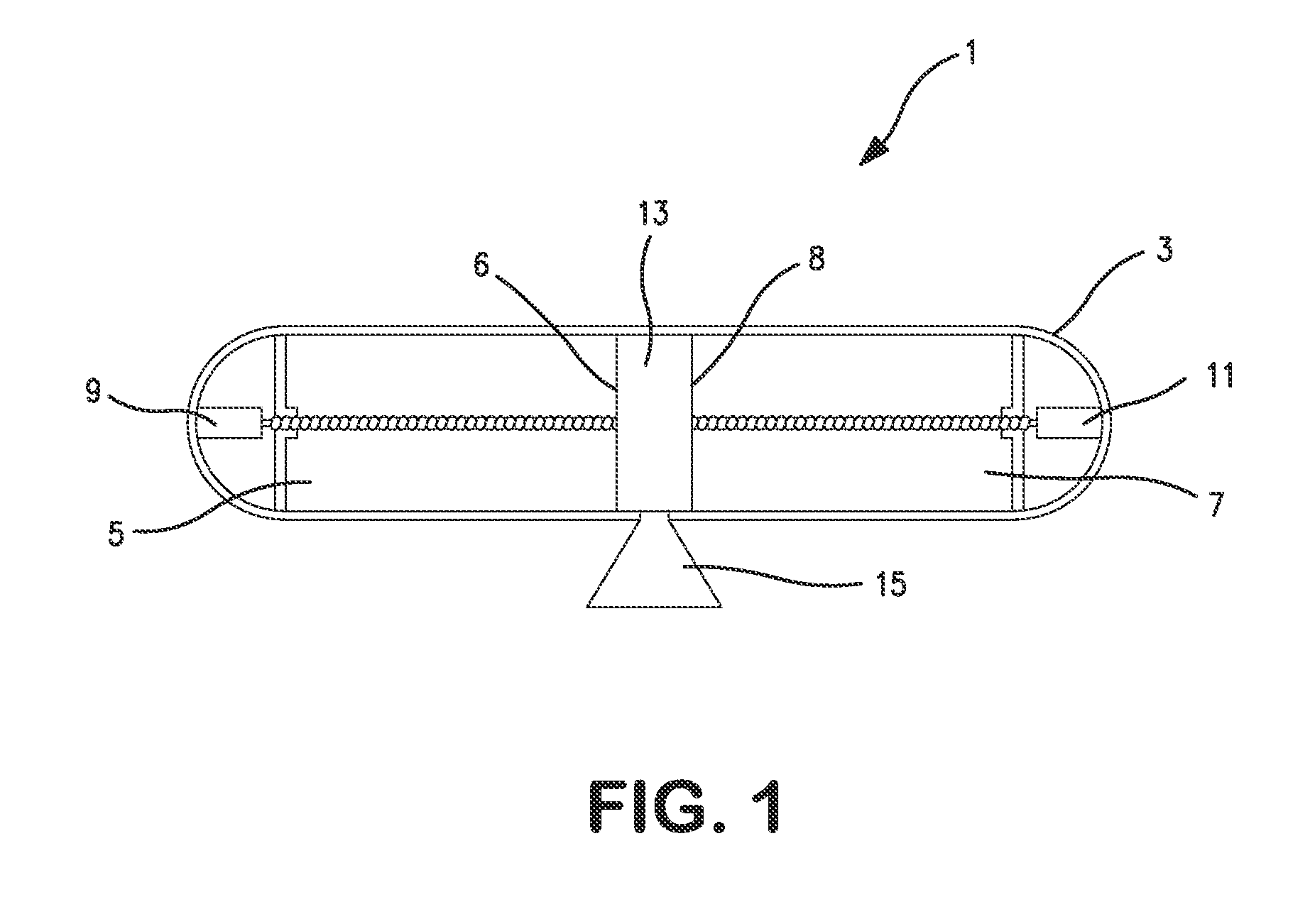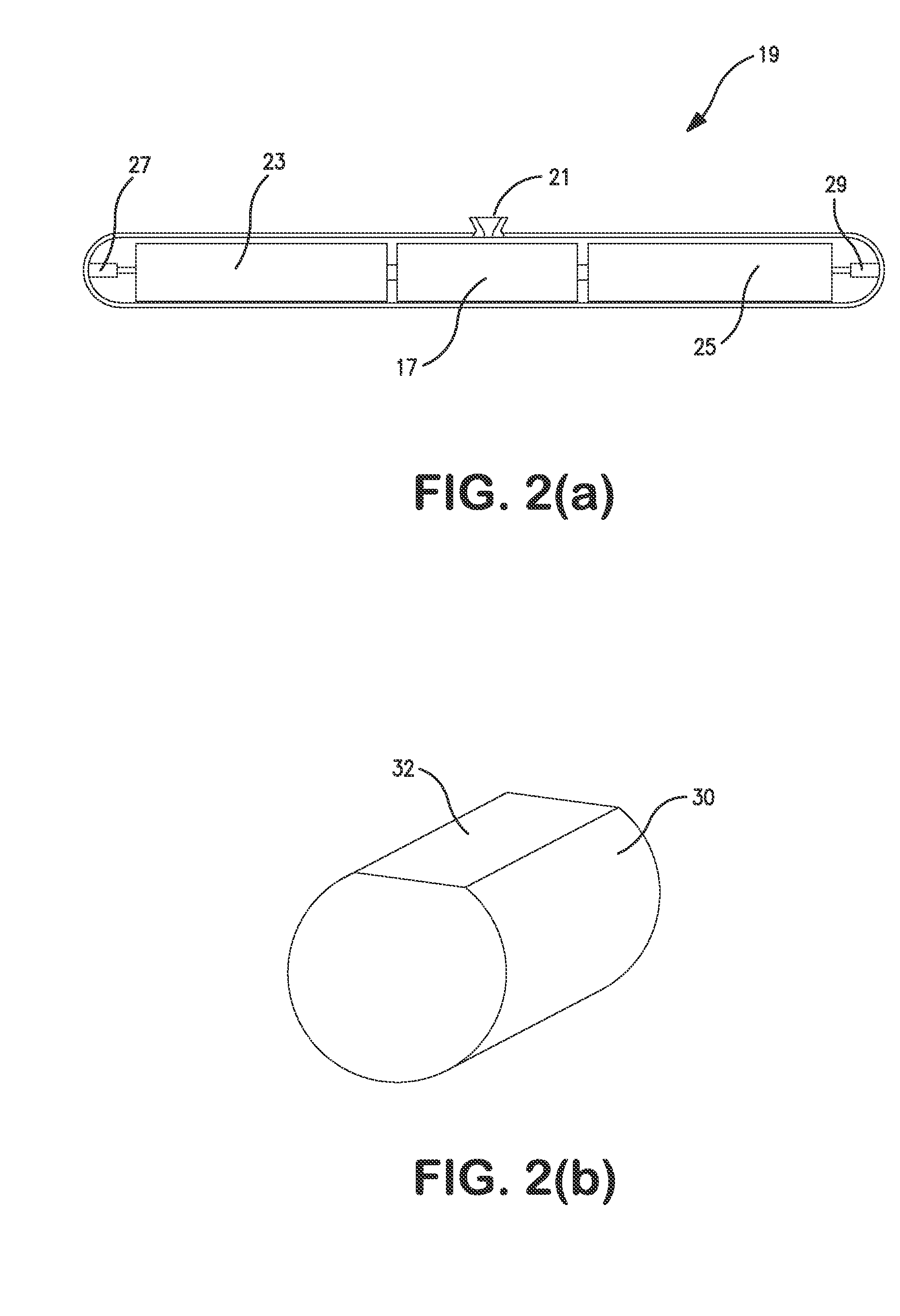Propulsion system, opposing grains rocket engine, and method for controlling the burn rate of solid propellant grains
a technology of propellant grains and rocket engines, which is applied in the direction of pressure gas generation, explosives, weapons, etc., can solve the problems of limited combustion control using valves, low condensed phase particulate, and limited precision of solid rockets, so as to reduce increase the pressure of combustion gases in the engine, and reduce the effect of erosive burning and heat flux
- Summary
- Abstract
- Description
- Claims
- Application Information
AI Technical Summary
Benefits of technology
Problems solved by technology
Method used
Image
Examples
example 1
Preparation of Ogre Prototype Thruster Hardware
[0110]The prototype thruster on test bench is shown in FIG. 3 generally at 31. This prototype employs two Thomson 12 VDC Performance Pak linear, ball-screw actuators 33, 35. The thrusters are capable of moving two propellant grains independently anywhere in the combustion chamber 37. Hold down blocks 39 fix the prototype on bench 41.
[0111]Each actuator 33, 35 has a stroke length of four inches, and is capable of exerting 750 lbs of force. These actuators 33, 35 are capable of extending and retracting at a maximum rate of 1.1 inches per second. Under motor control, the actuators 33, 35 can vary from 0 inches per second up to the stated 1.1 inches per second of travel rate. The propellant surfaces will be able to move apart or together at a rate of 2.2 inches per second.
[0112]The combustion chamber shown generally at 37 in FIG. 4 is centered between two actuators. Aluminum hold down blocks 39 were fabricated to secure and center the proto...
example 2
Opposing Grains Rocket Engine Prototype Thruster Control System
[0118]National Instruments' LabVIEW™ software was used as the basis for controlling the thruster and acquiring data on the opposing grains rocket engine prototype control system. The LabVIEW™ controlled opposing grains rocket engine (OGRE) system consists of a combination of hardware and software. In particular, the hardware consisted of two Pololu SMC04™ brushed motor controllers, a power supply for excitation voltage, a power relay, which would allow the power to be cut in the event of an abort situation, and control and feedback lines. The control and feedback lines terminate in a data acquisition and control system. The wires were connected to multiple differing terminal blocks installed in a National Instruments SCXI-1001 12 slot chassis.
[0119]The Pololu SMC04™ had the ability to control brushed DC motors with current requirements of up to 30 amps continuous. The SMC04™ had multiple controlling interfaces including ...
example 3
Actuation System Calibration
[0121]It was necessary to calibrate the actuator internal displacement sensors before test firing. A Penny & Giles SLS190 Linear Variable Displacement Transducer™ (LVDT) identified as 70 in FIG. 6 is capable of greater than 0.01 mm resolution, with a repeatability of 0.01 mm was employed to calibrate the LVDT. This LVDT sensor 70 is shown to the right of the bench prototype in FIG. 6. As expected, this sensor proved to be highly linear in output.
[0122]FIG. 6 shows the LVDT, which appears as a cylinder to the right of the actuator, integrated into the experimental setup, so that it sees the same displacement as the actuator. Both actuators contained an internal displacement sensor. The sensors were calibrated by comparing their output to that generated by the LVDT 70. All three sensors proved to be highly linear and repeatable during these calibration runs.
PUM
 Login to View More
Login to View More Abstract
Description
Claims
Application Information
 Login to View More
Login to View More - R&D
- Intellectual Property
- Life Sciences
- Materials
- Tech Scout
- Unparalleled Data Quality
- Higher Quality Content
- 60% Fewer Hallucinations
Browse by: Latest US Patents, China's latest patents, Technical Efficacy Thesaurus, Application Domain, Technology Topic, Popular Technical Reports.
© 2025 PatSnap. All rights reserved.Legal|Privacy policy|Modern Slavery Act Transparency Statement|Sitemap|About US| Contact US: help@patsnap.com



